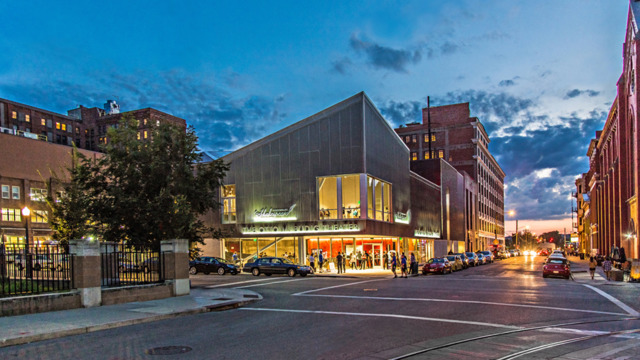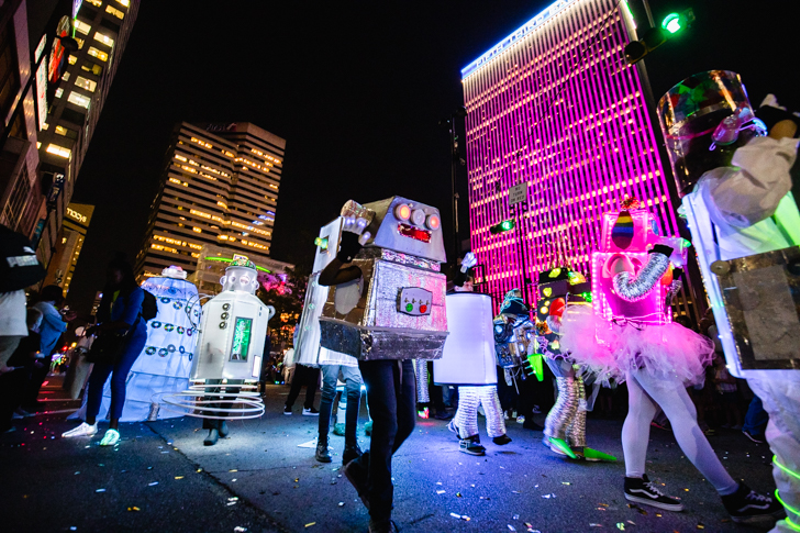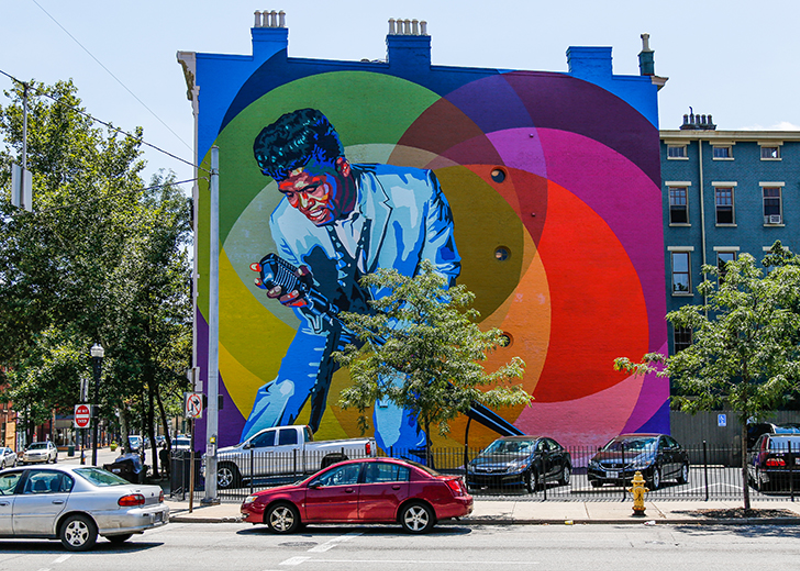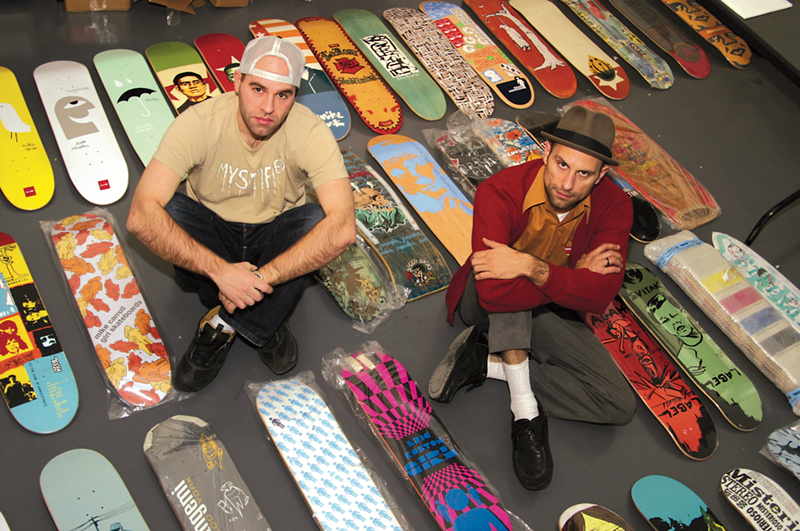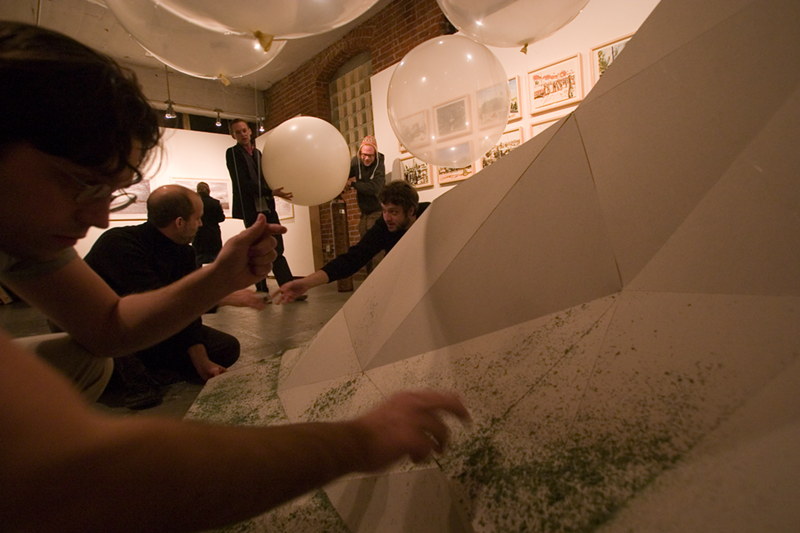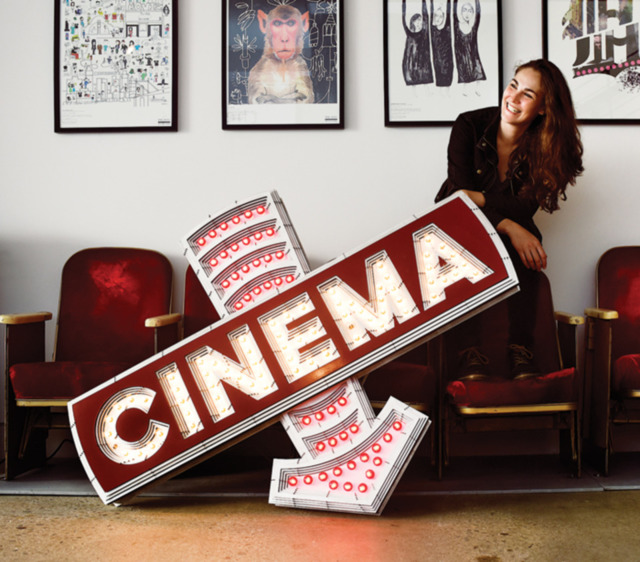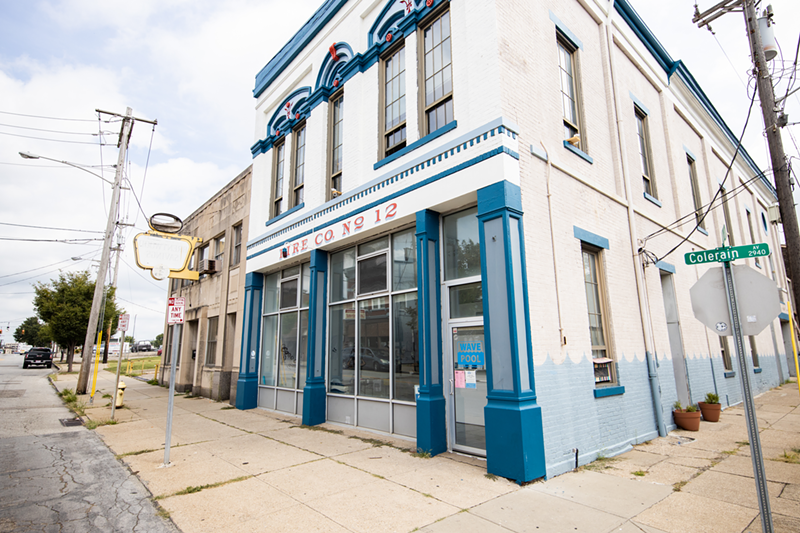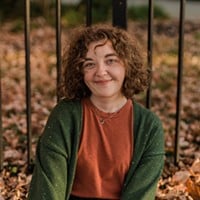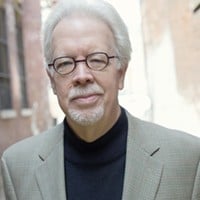In the past three decades, Cincinnati’s art scene has undergone an evolution of sorts, with new galleries, theaters and organizations making their mark and Queen City stalwarts finding innovative ways to stay relevant. Founded as an altweekly with a focus on arts and culture, a piece of CityBeat’s mission has always been to delve into the latest arts happenings — be they popular or under the radar. While there’s likely hundreds of other moments we could mention, here’s a solid list of 25 in celebration of, you guessed it, our 25th anniversary.
Cincinnati Shakespeare Company
In late 1993, some recent college grads — Jasson Minadakis and Chris Reeder, who interned at Ensemble Theatre Cincinnati, as well as Nick Rose, Marni Penning and others — launched Fahrenheit Theatre Company, presenting classics and new plays at Gabriel’s Corner, a church basement in Over-the-Rhine. They assembled a group of young actors who moved from venue to venue — The Carnegie in Covington and then the black box Fifth Third Bank Theater at the new Aronoff Center. Before long they became the Cincinnati Shakespeare Festival. CityBeat covered them steadily as they evolved into the Cincinnati Shakespeare Company and moved into the onetime Real Movies cinema on Race Street in downtown Cincinnati. Now 26 seasons along, CSC has its own new theater on Elm Street just south of Washington Park.
Zaha Hadid at the CAC
Downtown’s Contemporary Arts Center began in 1939 as the Modern Arts Society in the basement of the Cincinnati Art Museum. In 1964 it would move to the Women’s Exchange Building and then to the Mercantile Center in 1970 where it occupied 10,000 square feet of exhibition space. But it was in 2003 that the CAC moved to its most iconic home — the Lois & Richard Rosenthal Center for Contemporary Art. Designed by the late, acclaimed architect Zaha Hadid, it was named the “most important American building to be completed since the end of the cold war” by The New York Times. It also marked the first museum in the United States to be designed by a woman. With over 80,000 square feet of space, the building has remained not only a Queen City icon, but a national one, too.
MusicNOW festival
God bless Bryce Dessner! Rather than just forgetting Cincinnati after moving to Brooklyn and starting (with other Cincinnatians) the successful AltRock band The National, he remembered his hometown. Beginning in 2006 at the Contemporary Arts Center, and then moving to Memorial Hall, Music Hall and the Taft Theatre (with special events elsewhere), his MusicNOW Festival has attracted a national following for its mixture of adventurous Classical, AltRock, Jazz and other progressive music. The line-ups, which he curates, are memorable — guests like My Brightest Diamond, Nico Muhly, Bang on a Can All-Stars, Kronos Quartet, Dirty Projectors, Philip Glass, Steve Reich, Tinariwen, David Lang, Julia Wolfe and, of course, The National. In 2018, coupled with The National’s new Cincinnati AltRock festival, Homecoming, MusicNOW moved to the National Underground Railroad Freedom Center and had its single best show ever — Eighth Blackbird’s collaboration with Will Oldham on composer Frederic Rzewski’s thrilling, chilling “Coming Together.” When both festivals were then put on hold in 2019, the fear was Dessner had moved on. But both MusicNOW and Homecoming will be back in 2020.
BLINK
BLINK — a four-night light and art experience spanning 30 city blocks through Over-the-Rhine, downtown and, new in 2019, across an illuminated Roebling Bridge into Covington — first took over Cincinnati in 2017. Its inaugural year drew in over an estimated one million attendees and cost $3 million to stage. The stakes were upped for BLINK 2019, which featured new large-scale murals, light installations, interactive sculptures, performance art, live entertainment and projection mapping works. An extension of the now-ceased Lumenocity — which fused the sounds of the Cincinnati Symphony Orchestra with dazzling light projections — BLINK was a reach for something more. As outlined in their manifesto: It’s meant to envision a “future city.” Produced by local creative agencies Brave Berlin, AGAR and ArtWorks, with support from the Cincinnati USA Regional Chamber, the Carol Ann & Ralph V. Haile, Jr./U.S. Bank Foundation and a number of other sponsors, if BLINK’s hype is any indication, we can bank on its return.
The Cincinnati Art Museum Gets Cutting Edge
The Cincinnati Art Museum has been through some action-packed recent years, beginning in 2006 when Aaron Betsky became the director. Trained as an architect and also a provocative writer, he led the museum’s quest for a major expansion and chose the Dutch firm Neutelings Riedijk Architects to build, as part of a campus expansion, a flower-shaped tower that would become a civic landmark. But the recession stopped that project. Betsky had other ideas, many very good, but he elicited great opposition when he approved a 2014 project by artist Todd Pavlisko to have a sharpshooter fire bullets into a brass cube in the Schmidlapp Gallery. The event and resultant show occurred, but he left before the year was out. Cameron Kitchin arrived from Memphis’ Brooks Museum of Art as a successor and, although much less outspoken, supported a succession of exhibitions that were both very successful and, often, cutting-edge — work by Gillian Wearing, Ragnar Kjartansson, Iris van Herpen and William Kentridge, plus a visit from China’s Terracotta Army. In 2019, he supported what became the museum’s most popular show ever: No Spectators: The Art of Burning Man.
Swing House
From the exterior, Mark de Jong’s Swing House doesn’t appear any different from neighboring homes. CityBeat’s Steven Rosen described the 1880s three-story residential brick building in Camp Washington as “an ambitious and unusual house-sized sculptural installation.” Inside awaits lofty ceilings — de Jong removed the interior walls and upper floors — and a single suspended swing in the home’s center. “It represents freedom from architectural convention — it’s a radical departure from our expectations of everyday domesticity,” wrote Rosen. “It is, thus, not merely a swing. It is an experiential and experimental artwork — as is the house that surrounds, complements and is named for it.” From April to September 2018, the home and its ephemera — plus new work by de Jong — were the subject of an exhibition at the Contemporary Arts Center. Keep an eye peeled for open tours of the house and, if you’re looking for a quirky staycation, you can rent the one-bedroom, one-bathroom space on Airbnb.
ArtWorks’ Murals
ArtWorks has been a Queen City force since its inception in 1996. But it’s perhaps best recognized today for its mural program, which kicked off in 2007 and has been behind over 180 murals in neighborhoods across Greater Cincinnati. That effort was first spurred by a request from then-Mayor Mark Mallory, who was inspired by a trip to Philadelphia; their mural program, at the time, had completed over 3,000 murals. We’re not there yet, but the nonprofit organization has a lot to be proud of, from a vibrant larger-than-life portrait of King Records artist James Brown to a flock of birds soaring above a wintery Cincinnati Zoo in “Martha the Last Passenger Pigeon” to renderings of works by Cincinnati Modernist naturalist Charley Harper.
Know Theatre and the Cincinnati Fringe Festival
In 1999, CityBeat began covering the itinerant “Know Theatre Tribe,” a new company launched by Jay B. Kalagayan and other recent Xavier grads who presented their first productions of drama and poetry in art galleries and bookstores. Eventually they settled into Gabriel’s Corner in OTR and sharpened their focus to cutting-edge new works. Jason Bruffy, a young actor with Cincy Shakes, mapped out and launched a Fringe Festival in 2003. A year later he became Know’s artistic director, eventually moving the company into a permanent theater space on Jackson Street in Over-the-Rhine. Know became the producer of the annual Cincinnati Fringe Festival, a much-anticipated offering of offbeat theater that continues to draw people who are “kinda weird.” CityBeat has been the Fringe’s media sponsor for years, providing advance notice and just-in-time coverage of productions.
Maturing Film Festivals
Back in 2008, CityBeat did a cover story asking if Cincinnati might be ready for a broad-based, high profile, true film festival, “the kind that most people would assume a city of Cincinnati’s size and cultural reputation might want by now.” In 2020, we could write the same story. There has been progress — the specialized Jewish & Israeli Film Festival and Cindependent Film Festival have shown growth; and the Over-the-Rhine Film Festival is trying to emerge from its past as the specialized Reelabilities Film Festival (devoted to films about people with disabilities) without forsaking its roots. (Its curator, CityBeat film critic tt stern-enzi, scored a major coup in 2019 by booking the documentary What She Said: The Art of Pauline Kael before its New York theatrical release.) But in that 2008 story, native Cincinnatian Brian Gordon — then the artistic director for the Nashville Film Festival — spelled out what kind of festival a city like Cincinnati should have: “A film festival owes it to its public to find the best American indies out there, and to pursue more than just indies. I’m sure plenty of people in Cincinnati want to see a good foreign film. And you want to have diversity, to attract different audiences within a community.” We’re not there yet.
Visionaries + Voices
Visionaries + Voices, a nonprofit that works with artists with disabilities, celebrated its sweet 16 this year. Since its founding in 2003, V+V has spearheaded myriad programs, classes and exhibitions related to its practice through its studio spaces in Northside and Springdale. In 2011, it ushered in a Teaching Artists Program, which has graduated 27 art teachers who now instruct classes throughout Cincinnati’s public and private schools. And in 2017 it opened The Visionarium in Oakley: a storefront that was intended to expand V+V artists’ professional opportunities, be it by teaching or selling their art/merchandise. Though beloved, The Visionarium closed its doors in August 2019. Its spirit will live on through the work of the artists and staff who were able to craft a space for creativity and community outreach during its brief stay in Oakley and work can still be bought online and at the nonprofit’s Northside gallery.
Memorable Arts Supporters
The past 25 years have seen the loss of some of our biggest fine arts supporters. There are too many to properly credit, but here are some: Peggy Frank Crawford, who in 1939 was one of the three women to found the Cincinnati Modern Art Society, which evolved into today’s Contemporary Arts Center, died in 2015; Harris and Alice Weston, who were major supporters of the visual arts and gave their name to the nonprofit Weston Art Gallery in the Aronoff Center, died in 2009 and 2019, respectively; arts philanthropist Patricia A. Corbett passed away in 2008; Louise Nippert, who left $85 million to arts organizations, especially those supporting Classical music, died in 2012; Erich Kunzel Jr., who was the Cincinnati Pops Conductor for 32 years, died in 2009; Lois Rosenthal, who with husband Richard, supported the Playhouse in the Park, the Contemporary Arts Center (its Zaha Hadid-designed building bears the name Lois & Richard Rosenthal Center for Contemporary Art) and others, passed away in 2014; and Harry Wilks, who created Hamilton’s Pyramid Hill Sculpture Park and was a supporter of Cincinnati Opera, died in 2014.
Beautiful Losers: Contemporary Art and Street Culture
While the Contemporary Arts Center’s most famous exhibition remains 1990’s Robert Mapplethorpe retrospective The Perfect Moment, its most influential one may eventually turn out to be 2004’s Beautiful Losers: Contemporary Art and Street Culture, which was curated by the CAC, San Francisco’s Yerba Buena Center for the Arts and Christian Strike and Aaron Rose of Iconoclast. That show, which has had an international impact, ushered in street artists to the world of museums, and the CAC has never looked back. In 2010, it featured a retrospective of Shepard Fairey’s poster work — at the time, he was hot for his Barack Obama “Hope” poster. In 2011, it co-curated Keith Haring: 1978-82. Perhaps most importantly, in 2013 it held the first solo museum show for French street photographer JR, who has gone on to ever-higher levels of public acclaim for his worldwide efforts to commemorate everyday people via giant photographic posters in public spaces. In 2017-’18, it featured Swoon in an exhibit, and February 2020 brings in the work of Portuguese street artist Vhils, who removes surface layers of urban walls to create textured portraits.
Cincinnati Entertainment Awards for Theater
CityBeat helped to elevate awareness of Cincinnati’s theater scene with a 14-year run of recognition (1997-2010) via the Cincinnati Entertainment Awards. Initially presented in tandem with the CEAs for music (which just had its 22nd event), the theater CEAs continued until the program merged with the Acclaims, which was launched by The Cincinnati Enquirer in 2004. The CEAs started with 13 categories in 1997 and eventually expanded to 27 in the final year. Typically, four candidates were named; some awards were decided popularly by online voting, others only by the panel of critics who saw a broad array of shows and could assess relative quality. The awards recognized many outstanding productions including those at Playhouse in the Park (like its 2005 revival of Sondheim’s Company, which went on to win the 2007 Tony Award on Broadway); Ensemble Theatre Cincinnati; Cincinnati Shakespeare Company, the short-lived New Stage Collective; and community theaters including Falcon Theatre, Cincinnati Music Theatre, Showbiz Players and Footlighters. Alternative productions were added as a category in 2005, often singling out Cincinnati Fringe Festival shows. Sadly, the joint program ran aground during the 2010-2011 season. And while it’s unfortunate there’s no longer a theater awards program in Cincinnati, our local companies continue to mount excellent productions.
Daubigny, Monet, Van Gogh: Impressions of Landscape
Lynne Abrosini, the Taft Museum of Art’s chief curator, spent some 14 years researching and organizing her 2016 exhibition Daubigny, Monet, Van Gogh: Impressions of Landscape, and the result was worth her sizable investment of time. Building on the fact that the museum’s founders, Charles and Anna Taft, collected works by a relatively conventional 19th-century French landscape painter, Charles-François Daubigny, the exhibit brought together paintings by him with those of such Impressionists and Post-Impressionists as Monet, Pissarro and van Gogh to show how the overlooked Daubigny was an influence upon and ally of them. Ambrosini got loans from such museums as the Scottish National Gallery and Amsterdam’s Van Gogh Museum, and also featured some 40 works by Daubigny. Charles and Anna Taft would have been proud, even if they declined to collect Impressionism in their lifetime.
Film Cincinnati
For over three decades, Film Cincinnati has brought a wealth of film production teams to our city — especially in the last decade. Incorporated as a nonprofit in 1991, the office has been responsible for bringing Oscar-winning and -nominated movies like Rain Man, Traffic, The Ides of March, Carol and Seabiscuit to shoot at least a few scenes in the Queen City. Others include My Days of Mercy, Miles Ahead, The Fits, GOAT and the Robert Redford-starring The Old Man & the Gun. Cincy was the backdrop of 2017’s nightmarish Killing of a Sacred Deer, too, which filmed at the Christ Hospital as well as Hyde Park and Northside. And Zac Efron, as serial killer Ted Bundy in Extremely Wicked, Shockingly Evil and Vile, took Northern Kentucky by storm for the flick in early 2018. Most recently, Carol director Todd Haynes returned to Cincinnati to film the just-released Dark Waters, a harrowing docudrama starring Mark Ruffalo and based on the real-life work of local lawyer Rob Bilott, who took on chemical company DuPont.
Publico
Publico — an “alternative space” in Over-the-Rhine — was manifested by brothers Matt and Paul Coors and their friend Dan Reddinger in a renovated loft apartment on Clay Street on Jan. 31, 2003. And over the course of five years, Publico staged some of the most compelling programming in the region, with 10 exhibitions a year and plenty of parties, musical performances and events sprinkled in between. Initially sourcing from the Art Academy of Cincinnati and the University of Cincinnati’s College of Design, Architecture, Art and Planning, in 2004 they expanded to artists from outside the city with Good World, a show that ran concurrently with the CAC’s nationally lauded Beautiful Losers street art exhibit. On the cusp of Publico’s closing in 2008, Matt Distel wrote in CityBeat, “The gallery produced superb exhibitions, tough and uncompromised. It organized music and poetry events that rivaled any arts organization in the Midwest, regardless of size. It did all of this on something less than a shoestring budget.”
The Art Academy of Cincinnati Turns 150
The Art Academy of Cincinnati is currently in the midst of its sesquicentennial, having released a book in 2018 chronicling its 150-year history — from its origins as the McMicken School of Design and Drawing in 1869 to merging with the University of Cincinnati in 1871 and its departure in 1887, in which it crystallized as the AAC and resided within the Cincinnati Art Museum. It wasn’t until 2005 that the academy moved to its current space at 1212 Jackson St. in Over-the-Rhine. Former CityBeat Arts & Culture editor Steven Rosen interviewed Kim Krause, a now-retired faculty member who was the school’s fine arts chair from 1997-2012 and academic dean from 2013-2018, in a cover story about AAC’s 150th celebration and Krause said, “The first few years were iffy; we had some staff who refused to move downtown with us. We also knew we had to change our mission. We wanted to be a much edgier kind of school. …We had to get people convinced (the move) was a really good idea. In hindsight, a lot has happened since in that neighborhood. Our presence was a catalyst that told people, ‘It’s going to be OK.’”
Ensemble Theatre Cincinnati
Ensemble Theatre Cincinnati, around since 1988, was having problems attracting audiences in the early to mid ’90s. By 1996, D. Lynn Meyers was hired by ETC to take on the sad task of shutting down the struggling company on Vine Street. Instead, she brought energy, passion and an emphasis on staging premieres. CityBeat was a proponent for growth and revitalization of historic Over-the-Rhine, a cause that Meyers was all for. Telling audiences about ETC’s productions helped the theater grow and attracted more people to the neighborhood.
People’s Liberty
People’s Liberty launched in 2014, setting out to invest in the next generation of leadership in Cincinnati by awarding grants to individuals with ideas, not to organizations. The five-year effort came to a close in 2019, but its lasting impact will likely continue to be felt for years to come. As an arm of the Carol Ann & Ralph V. Haile, Jr./U.S. Bank Foundation, it funded a diverse array of projects, from The Mini Microcinema, an experimental cinematheque, to pop-up Turkish coffeehouse Rüya and the Play Library, which still lends toys and games to members at its Over-the-Rhine storefront at 1306 Main St. As it exits, the philanthropic lab has ushered in two new like-minded organizations: In Our Backyards and the Urban Consulate.
FotoFocus Biennial
Founded in 2010, the FotoFocus Biennial has since celebrated lens-based art and works from more artists than can possibly be mentioned. The 2018 iteration saw over 90 exhibits and events unfold at spaces across Greater Cincinnati, Dayton and even as far as Columbus. Big names included Berenice Abbott, Eugène Atget and British artist and Turner Prize winner Gillian Wearing. Other programming includes a symposium, lecture and visiting artist series. It will be back in 2020.
Global Tree Project: Hanging Garden
Of Shinji Turner-Yamamoto’s Global Tree Project: Hanging Garden — a 2010 installation at Mount Adams’ old Holy Cross Church — CityBeat’s Steven Rosen wrote that it was the “best public-art project” he had seen since moving back to Cincinnati in 2007. He went on to write that it was so “contemplatively beautiful it should be permanent.” Unfortunately, since one of the two suspended trees was alive and needed care/watering, that wasn’t sustainable. A related exhibition, Disappearances, ran through 2011 at the Contemporary Arts Center.
Far Flung
In a similar vein to Turner-Yamaoto’s work is Far Flung, a large-scale, outdoor sculpture on the grounds of the historic Taft Museum of Art — and it is pretty, pretty cool. Sculptor Patrick Dougherty and volunteers manipulated and twisted more than six tons of willow tree saplings into whirling shapes that call to mind hobbit homes, a fairy garden or a Dr. Seuss-style dream manifestation. The best part? Visitors can touch and walk through it. First installed in April 2018, the creation was made to last 18 to 20 months — so you still have a chance to experience its whimsy.
Summermusik
Cincinnati Chamber Orchestra first introduced its popular multi-week Summermusik festival in 2015, featuring fresh programming in unique settings. Originally designed as a way to fill the gap between the end of the Cincinnati Opera’s season and the start of the Cincinnati Symphony Orchestra’s, the fest features traditional concert fare alongside more low-key variations; “chamber crawls,” for example, feature small ensembles in local bars. Concerts often sell-out and the festival has managed to remain relevant since its inception.
Opera Fusion: New Works
Opera Fusion: New Works was founded in 2011 as a collaborative effort between the Cincinnati Opera and the University of Cincinnati’s College-Conservatory of Music with the goal of championing new American operas. The collab has found success not only locally, but on a national scale. In 2016, Fellow Travelers was named one of that year’s top Classical music events by The New York Times. Based on Thomas Mallon’s 2007 novel set in Washington D.C. during the “lavender scare” of the 1950s, it centers on a love affair between two men working for the federal government. It was an undeniable success for the still-burgeoning initiative — Fellow Travelers was, at the time, only the second Opera Fusion premiered by CO. This year’s Blind Injustice was also a hit. In fact, CityBeat’s Anne Arenstein called the production a “masterpiece.” Based on University of Cincinnati law professor and Ohio Innocence Project co-founder Mark Godsey’s 2017 book Blind Injustice: A Former Prosecutor Exposes the Psychology and Politics of Wrongful Incarceration, the opera unravels corruption in the criminal justice system through the real-life stories of those who have been wrongfully convicted. Powerful and impacting, Opera Fusion’s offerings point to a focus on important social issues. Here’s to more.
Wave Pool and the Rise of Camp Washington as an Arts Hub
In 2014, Wave Pool, the community-driven, artist-led experimental art gallery, was one of the first generation of new artistic outposts to stake a claim in Camp Washington. Situated in a repurposed firehouse, Wave Pool has become a burgeoning force for change and action in the small community. It also acts as a haven for artists-in-residence (via its Art Space Is Your Space program) and niche exhibitions. In 2017, Wave Pool — alongside immigrant and refugee resource group Heartfelt Tidbits — launched social enterprise the Welcome Project. Part workshop, part retail space and part cozy hangout, the Welcome Project began as a way to empower Cincinnati’s “newest neighbors” and provide a support system for recent refugees and immigrants to Cincinnati.

